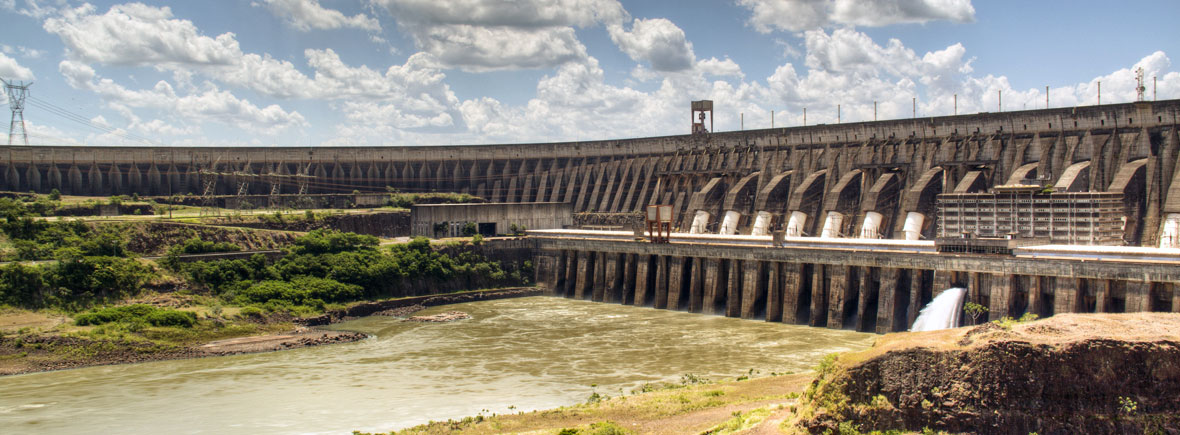Peter thought I was joking when I suggested booking the special extended tour of Itaipu Dam. The mega-structure, split geographically and politically between Brazil and Paraguay, is one of the world’s largest hydroelectric projects. With 18 massive turbine generators and a reservoir stretching 160km (100mi), Itaipu Dam generates 90 million megawatt hours of energy every year. To put that into context, Brazil would have to burn 536 thousand barrels of oil per day to obtain equivalent energy from thermoelectric plants.
Naturally, I wanted to know more.
As I enthused about Itaipu, Peter fast realised that I wasn’t joking. Despite reservations, he conceded that if he could take me camping in Colombia and trekking in Cotopaxi, I could take him on a 2.5-hour tour of a dam (#geekrule).
The Special Tour of Itaipu Dam allows visitors into the inner sections of the dam. Unlike the cheaper and more generic Panoramic Tour, the Special Tour hosts a small number of customers and therefore offers a more intimate look behind the scenes.
Our visit started aboard a comfortable bus on which we met our trilingual guide, Helena (who spoke English, Spanish and Portuguese). Helena gave an introductory talk and handed out bottles of water, hair nets and helmets to our group of seven.
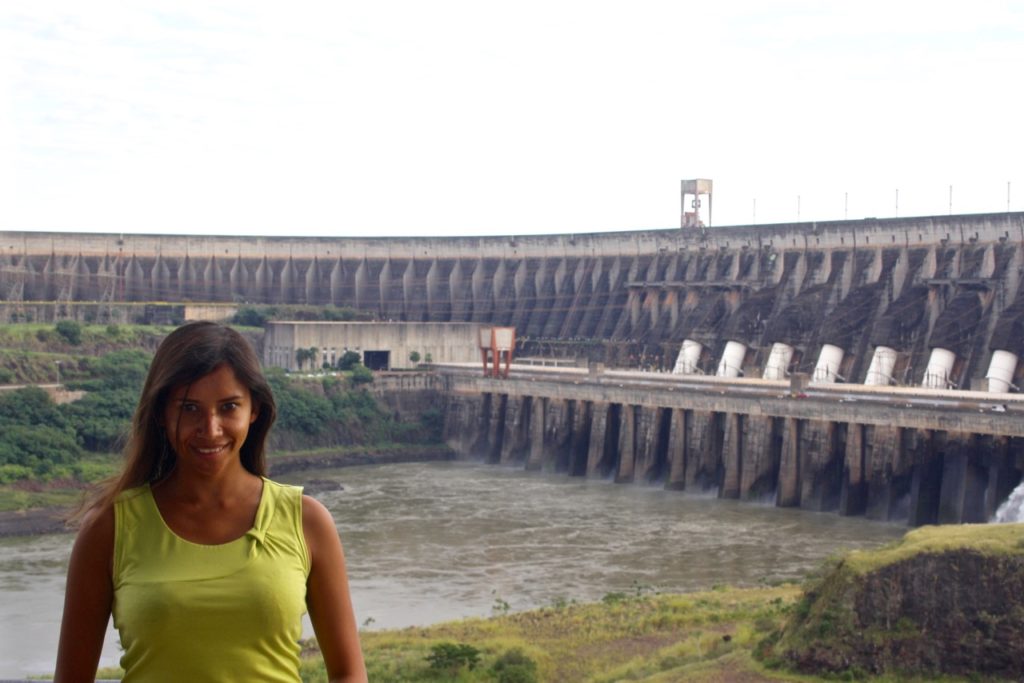
Our first stop was at the Central Belvedere and Poty’s Panel Station. From here, we had a panoramic view of the dam and the spillway, which is used to drain excess water during rainy months.
Unfortunately, the spillway wasn’t flowing during our time there but the gargantuan concrete structure was impressive nonetheless.
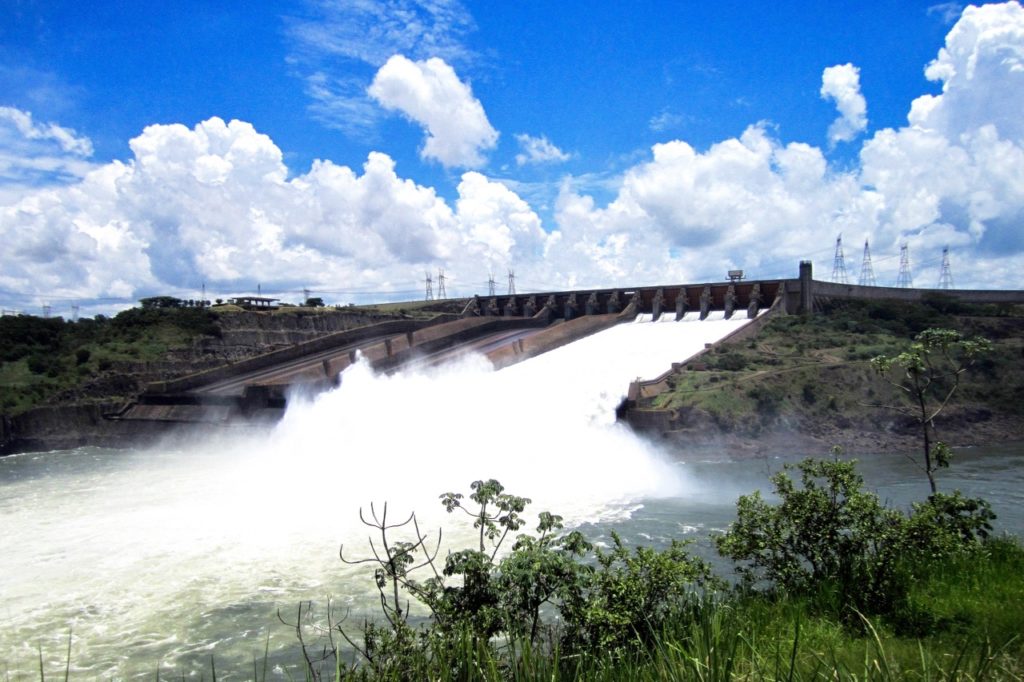
As we marvelled at the scale, Helena asked Peter and me if we were engineers like our fellow visitors.
“No, just nerds,” I told her.
She laughed. “No, but seriously?”
“Erm, seriously – just nerds.”
“Ah.” She stopped laughing.
On we went to Concrete Dam Station, located at the top of the dam where the generating units’ water intake gates are located. We enjoyed a privileged view of the plant’s reservoir and the Paraná River, which resumes its course once it passes the dam.
Here, we learnt that Itaipu Dam produces 17% of Brazil’s power and 75% of Paraguay’s. Interestingly, as the far smaller country, Paraguay doesn’t use its 50% share of energy and sells some of it back to Brazil.
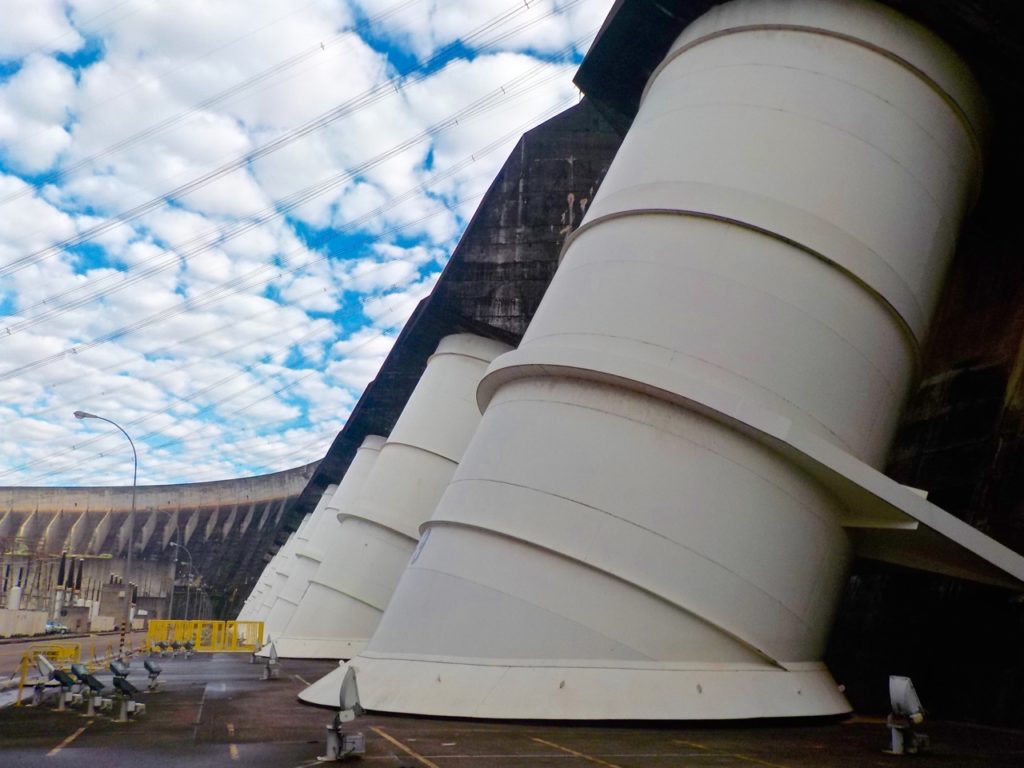
Our next stop took us inside the dam to Cathedral Station, so named because of the hollow architecture similar to that of a cathedral. On our way there, we stopped by a number of huge ducts, which transport up to 700,000 litres of water per second (or half the flow of the Iguazu Falls within each duct).
Inside, we stopped by a one-kilometre long corridor to take in the overwhelming scale of the plant.
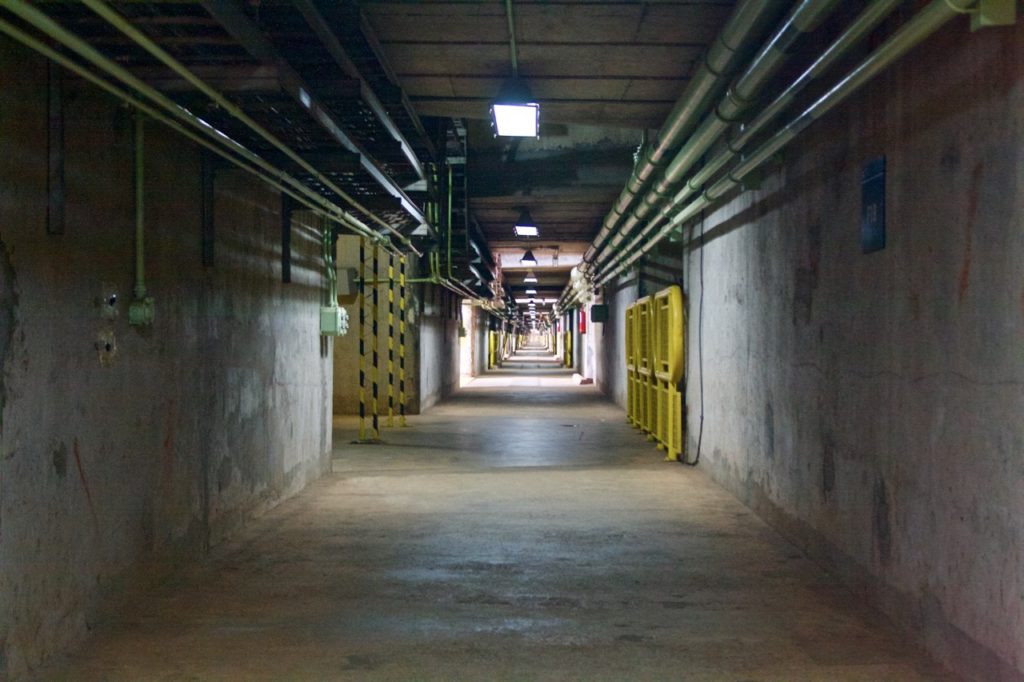
We then continued to the Central Command Room. Here, we gawped at the technicians in control of the power plant’s operations. The room, full of computers and electronic panels, was reminiscent of a space movie. As a Computer Science graduate with more than a passing interest in Star Trek, this was geek heaven.
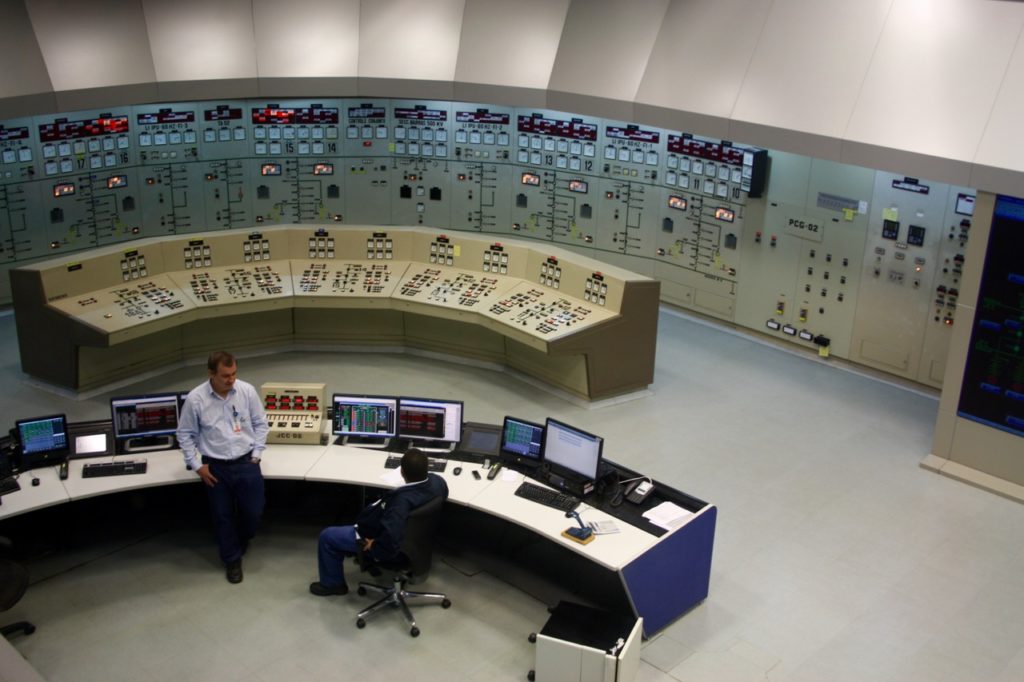
All the technicians at Itaipu Dam are bilingual in Spanish and Portuguese and efforts are made to employ an even mix of Paraguayans and Brazilians. We were reminded of the collaborative nature of the project by a yellow strip that runs across the floor, representing the border between the two countries.
We stopped to observe some of the magnificently powerful equipment used to run the plant, then moved onto the Outflow Channel Station where water flows from the turbines back into the Paraná River.
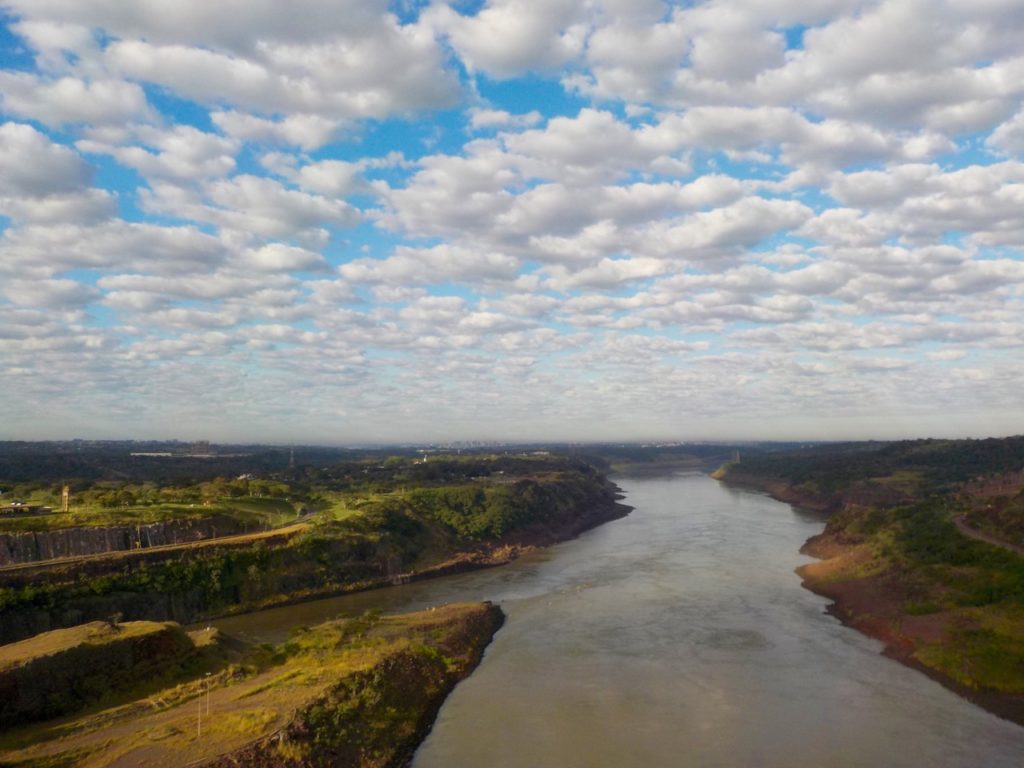
Our final stop was the Gallery Station where we watched workers on bikes travelling across the one-kilometre gallery. Once again, we marvelled at the enormous scale of Itaipu Dam.
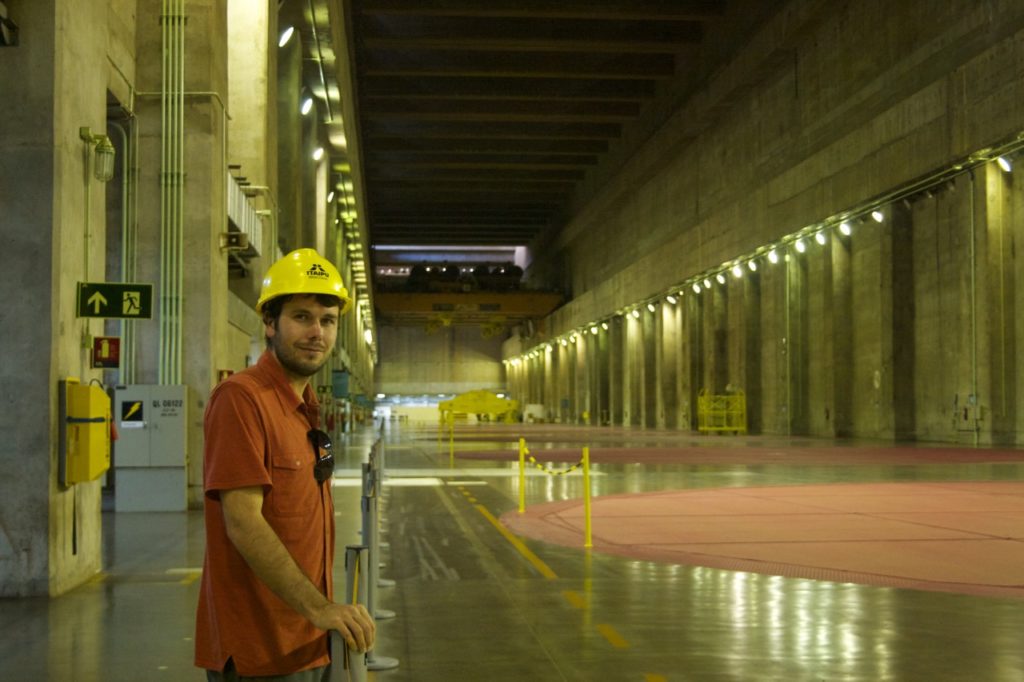
So grand is the structure, it was named in 1994 as one of the seven modern wonders of the world. Of course, the title didn’t come easy. At a construction cost of $19.6 billion USD, the dam is one of the most expensive objects ever built. It shifted the course of the seventh biggest river in the world, moved 50 million tons of earth and rock, displaced 10,000 families and drowned Guaíra Falls, the world’s largest waterfall by volume.
The result is the world’s largest generator of renewable clean energy, a testament to the fact that progress isn’t always painless.
If Iguazu Falls had us humbled by the might of nature, then Itaipu Dam stirred in us a pride for human technology.
Clearly, the Special Tour isn’t for everyone but if you have any interest in technology, science or engineering, then Itaipu Dam is not to be missed.
ITAIPU DAM: The Essentials
What: 2.5-hour Special Tour of Itaipu Dam. The tour includes seven stops across different areas of the dam including the one-kilometre corridor and central command room.
Where: On the border of Brazil and Paraguay, 12km from downtown Foz do Iguaçu in Brazil and 25km from Ciudad del Este in Paraguay.
When: Watch the spillway in action between the months of December and February when the steel floodgates are open during the rainy season. The opening of the spillway does not follow a pre-set schedule as it is directly linked to the level of the lake, so check first.
English-language tours available at 8am, 10am, 1.30pm and 3.30pm – book ahead.
How: Tickets for The Special Tour cost $25 USD and must be pre-booked. The shorter Panoramic Tour costs $12 USD; free if visiting from the Paraguayan side.
To visit as part of an organised tour, book via iguassufallstour.com or email iguassufallstour@gmail.com.
Alternatively, book tickets directly by emailing reservas@turismoitaipu.com.br and catch a cab to the visitor centre (12km from downtown Foz do Iguaçu, 25km from Ciudad del Este; approximately $5 USD).
If taking public transport from Foz do Iguaçu, take a Consorcio Sorriso bus on the ‘Conjunto C Norte’ or ‘Conjunto C Sul’ lines, departing from the central Foz do Iguaçu terminal. The trip lasts approximately 30 minutes and the fare is $2.40 BRL ($0.6 USD).
To reach Itaipu Dam from Ciudad del Este in Paraguay, go to the urban bus terminal and board any bus marked Hernandarias. Alight where the road splits towards Hernandarias and Itaipu (the conductor can help). Itaipu Dam is a three-minute walk from the bus stop but be warned there are no pedestrian crossings. The trip lasts approximately 50 minutes and the fare is 5,000 PYG ($0.85 USD).
Note: The minimum age for The Special Tour is 14 years old. Flip flops, high heel shoes, shorts and skirts are not allowed during the visit. Sandals are only permitted if they fit tightly on the heel, without high heels and if they have rubber soles.
